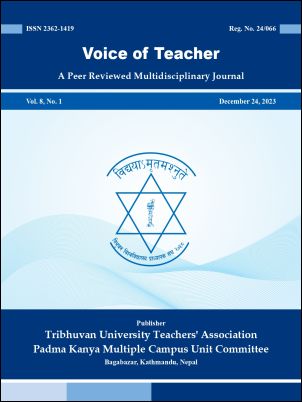A Comparative Study of Parliamentary Election of 2017 and 2022
DOI:
https://doi.org/10.3126/vot.v8i1.60862Keywords:
democracy, parliamentary election, proportional representation, inclusionAbstract
The study demonstrates the value and propriety of parliamentary election in a multicultural society such as Nepal, which is a rainbow of ethnic diversity. In order to lessen the tension between recognition and identification based on these disparities, it is appropriate to address varied groups such as caste, gender, ethnicity, region, and religion and provide them a sense of equality to participate in the social, economic, and political landscape of the country through the election.
The study includes proof from secondary sources of information such as significant books, journal articles, official documents, and election commission statistical data. The mainstream of political science strategy, which is based on liberal, multicultural, and representative theory and comparative research design, was shown to be less effective in this study’s descriptive and institutional approach.
The comparative results of the House of Representatives elections in 2017 and 2022 demonstrate that the general proportion of all clusters declined from 2017 to 2022, there was a minor change in the percentages of women and indigenous people, which grew by 0.28% for women and 0.73% for indigenous people. Women’s FPTP results increased 1.85% between 2017 and 2022, making them marginally better. There is a constant upward tendency in the percentage of Khas Arya.




